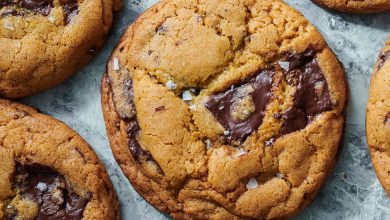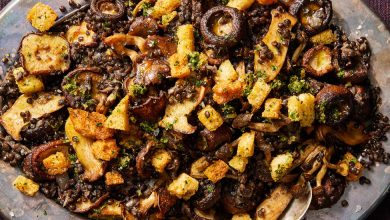A Cannoli Recipe That’ll Bring Sicily to You

I have a burning desire to visit Sicily, which has a little to do with “The White Lotus” and a lot to do with a tube-shaped pastry made of fried dough and filled with ricotta: cannoli.
Last year, I came across a video of Nicola and Luca Petta, father-son bakers who own Extrabar, a pastry shop in Piana degli Albanesi, preparing their specialty, cannoli. In the video, Luca mixes and rolls the dough, punches out the shells, and fries them until they’re golden and blistered. The shells flare outward dramatically at the ends, creating more surface area to hold the creamy sheep’s milk ricotta filling.
I was captivated.
Extrabar’s cannoli looked nothing like the tough, often-soggy versions with too-sweet filling I’d eaten before. Knowing that a trip to Sicily wasn’t happening anytime soon, I set out to make my own version, inspired by the perfect simplicity of Extrabar’s. I bought a set of stainless-steel cannoli molds, needed to maintain the tubular shape of the dough during frying, and, after several rounds of testing, finally achieved the crisp-tender shell I desired.
Recipe: Cannoli
The dough here is relatively simple and comes together easily by hand. Because it must be rolled out very thinly — more on why below — it’s kneaded for several minutes to develop the gluten it requires to extend without breaking. However, you don’t want too much gluten, which can make the resulting shells tough.
To create the necessary balance, cannoli dough contains two important ingredients: lard and wine. The lard (or another saturated fat, such as refined coconut oil) is worked into the dry ingredients so it coats some of the flour, which inhibits gluten formation and staves off toughness. The wine (red, white and Marsala are all common) contains alcohol, which hydrates the dough without developing gluten so it’s workable but not too strong.
In my research, I came across multiple theories about what produces cannoli’s bubbly exterior. Some sources said it was the result of the alcohol in the wine evaporating quickly on contact with the frying oil, others said it was prolonged kneading of the dough, which traps air bubbles. While there’s truth to both, all of my testing indicated quite simply that bubbles form when a well-hydrated dough is rolled very thinly and fried.
During rolling, the surface of the dough dehydrates slightly from exposure to the air and the flour on the work surface. When the dough hits the hot oil, the drier surfaces set, while the moisture trapped inside the dough turns to steam and puffs, creating lots of trapped air bubbles.
Repeated working causes gluten to contract and dough to spring back, so rolling cannoli dough sufficiently thin by hand is a two-step process (a pasta roller is a useful tool, but not necessary). First, the dough is rolled to about ⅛-inch thickness, then circles are punched out with a cutter. After letting the pieces rest on the work surface to help the gluten relax, each circle is rolled out again until it’s no more than 2 millimeters thick. The pieces are then formed loosely around the molds, which gives the dough space to bubble up and contract (as a result of moisture loss) during frying.
When lowering each piece of dough into the oil, grasp the ends of the mold with tongs and suspend it beneath the surface for several seconds — the dough will immediately puff and swell around the mold, preventing it from slipping out. Fry the shells thoroughly until they’re golden brown, turning them often to achieve an even color (the air bubbles will cause it to float), and remove them only when any bubbling has mostly subsided, a sign that most of the moisture has been driven off, and the shells will crisp as they cool.
Sheep’s milk ricotta is the traditional base for cannoli filling, but it is exceptionally hard to find in the United States. While cow’s milk ricotta won’t have the same richness or complexity, using the best-quality ricotta you can find will still make a delicious filling.
Different brands of ricotta vary significantly in moisture content, so strain yours until it’s very thick and dry, as adding sugar thins the consistency. I use confectioners’ sugar, which reduces the need for lots of mixing that can further loosen the texture. Though some sources say the cornstarch in confectioners’ sugar makes a starchy filling, I found it undetectable.
I flavor the ricotta lightly with honey, vanilla and citrus juice and zest, which step in for the traditional candied peel you often find in Sicilian recipes. But you could omit these and use different flavors or fold in mini chocolate chips, as is commonly done. Just be sure to fill the cannoli just before serving so the shells stay perfectly crisp. Though I still want to visit Sicily and go to Extrabar one day, these homemade cannoli will more than tide me over until then.
Follow New York Times Cooking on Instagram, Facebook, YouTube, TikTok and Pinterest. Get regular updates from New York Times Cooking, with recipe suggestions, cooking tips and shopping advice.



